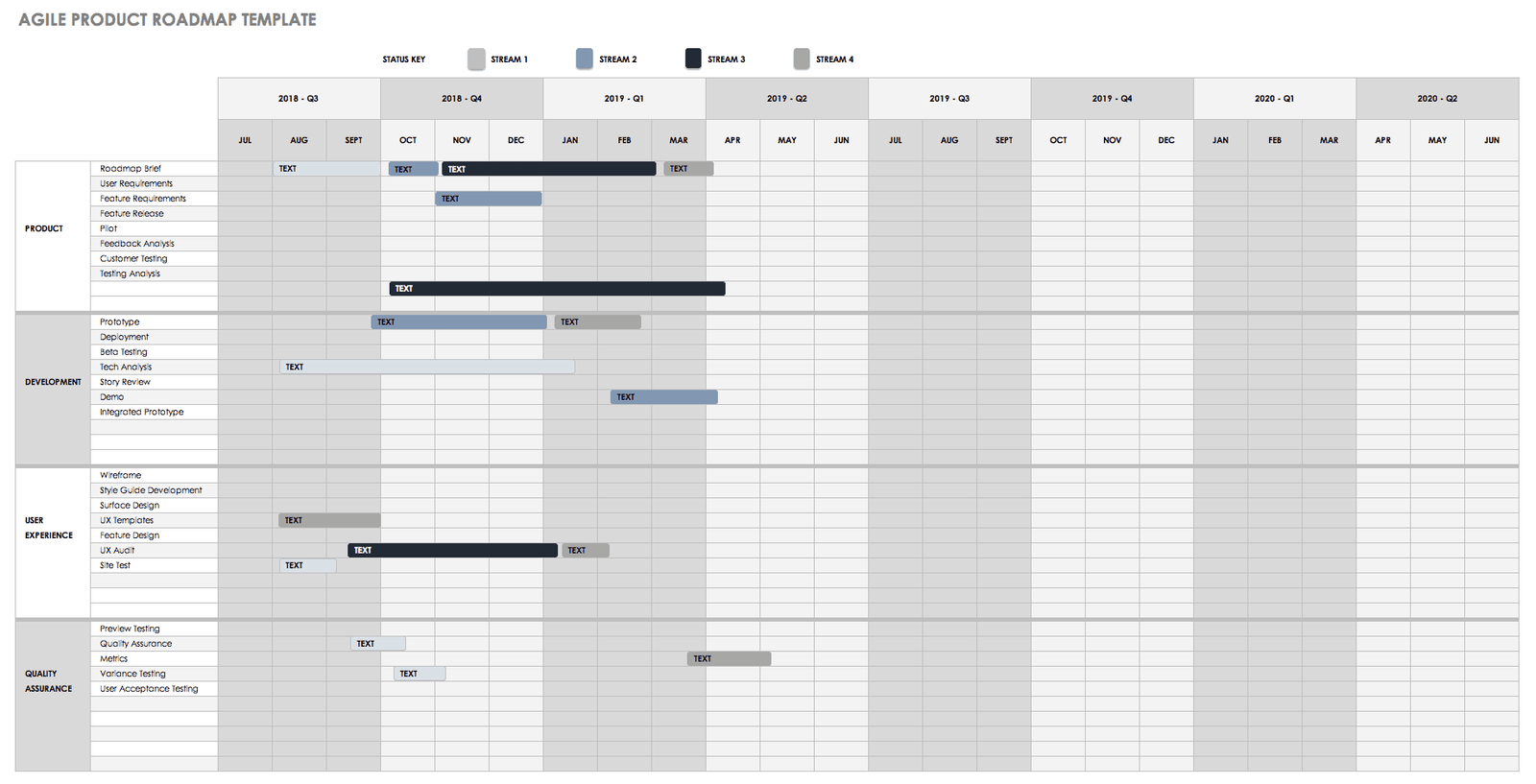A Product Roadmap serves as a strategic tool for product development teams to visualize and communicate their plans and goals. It outlines the product vision, key features, timelines, and milestones, providing a roadmap for the entire product lifecycle.
Importance of Product Roadmap:
A product roadmap plays a crucial role in aligning stakeholders, guiding decision-making, and ensuring focus on delivering customer value. Here’s why it’s essential:
- Clarity of Vision: A product roadmap helps articulate the product vision, ensuring that all team members understand the objectives and direction of the product.
- Prioritization of Features: By outlining key features and functionalities, the roadmap helps prioritize tasks and allocate resources effectively, focusing on delivering high-value features first.
- Alignment with Business Goals: The roadmap ensures that product development efforts align with broader business goals and objectives, maximizing the product’s impact on the organization’s success.
- Communication and Transparency: It serves as a communication tool, providing stakeholders with a transparent view of the product strategy, timelines, and progress, fostering trust and collaboration.
- Adaptability to Change: While providing a long-term vision, a product roadmap also allows for flexibility to adapt to changing market conditions, customer feedback, and business priorities.
Related Article: 10 Steps To Design Project Portfolio Tracker Template – PMITOOLS

Components of a Product Roadmap Template:
Now let’s delve into the key components that are discussed below:
Product Vision and Strategy:
-
- Define the product vision, goals, and objectives.
- Outline the target market, customer personas, and value proposition.
- Communicate the product’s strategic direction and how it aligns with business objectives.
Timeline and Releases:
-
- Divide the product development timeline into releases or iterations.
- Specify the start and end dates for each release.
- Highlight key milestones and deliverables for each release.
Features and Initiatives:
-
- List the features, functionalities, and initiatives planned for each release.
- Prioritize features based on business value, customer feedback, and market analysis.
- Include descriptions, user stories, and acceptance criteria for each feature.
Dependencies and Constraints:
-
- Identify dependencies between features or initiatives.
- Highlight any constraints such as resource limitations, technical challenges, or regulatory requirements.
- Consider how dependencies and constraints impact the overall timeline and prioritize accordingly.
Visual Representation:
-
- Utilize visual elements such as timelines, charts, and color-coding to make the roadmap easy to understand.
- Consider using swimlanes to differentiate between different product areas or customer segments.
- Incorporate progress indicators to track the completion status of each feature or release.
Related Article: 6 Steps For Creating Agile Project Plan Template | PMITOOLS.NET
Who manages Product Roadmap:
The product roadmap is typically managed and owned by the product manager. The product manager is responsible for defining the product vision, strategy, and goals, and the roadmap serves as a visual representation of how the product will evolve to achieve those objectives. Here’s how the product manager manages the product roadmap:
Related Article: 9 Useful Tips To Create A Rolling Action Item List – PMITOOLS
Developing the Roadmap: The product manager works closely with stakeholders, including executives, customers, sales, marketing, and development teams, to gather input and define the product roadmap. They consider business objectives, customer needs, market trends, and technical constraints to create a strategic plan for the product’s development.
Prioritizing Features: Based on input from stakeholders and market analysis, the product manager prioritizes features and initiatives for inclusion in the roadmap. They weigh factors such as business value, customer impact, resource availability, and technical feasibility to determine the order in which features will be developed.
Maintaining and Updating: The product manager regularly reviews and updates the product roadmap to reflect changes in business priorities, market conditions, and customer feedback. They may adjust timelines, reprioritize features, or add/remove items based on evolving needs and constraints.
Communicating the Roadmap: The product manager is responsible for communicating the product roadmap to various stakeholders, including executives, development teams, sales, marketing, and customers. They ensure that everyone understands the product strategy, upcoming features, and timelines. Communication channels may include presentations, meetings, email updates, or collaboration tools.
Aligning Stakeholders: The product manager works to align stakeholders around the product roadmap, gaining buy-in and support for the planned initiatives. They address concerns, answer questions, and provide rationale for decisions, fostering collaboration and ensuring that everyone is working towards the same goals.
Tracking Progress: Throughout the development process, the product manager tracks the progress of features and milestones outlined in the roadmap. They monitor key metrics, such as development velocity, feature completion rates, and customer feedback, to ensure that the project stays on track and adjustments are made as needed.
For Project Management Templates Visit: Project Management Documents Templates (ucube.biz)

Tips to create Product Roadmap Template:
Conclusion:


